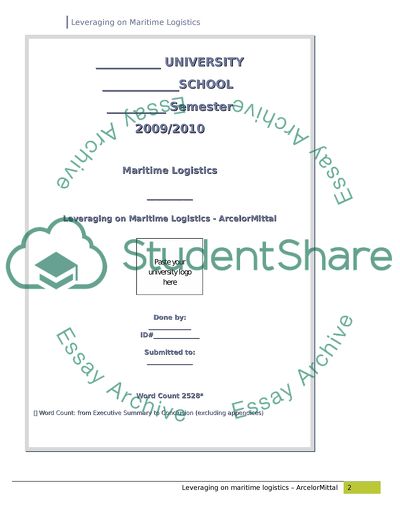Cite this document
(Leveraging on Maritime Logistics - ArcelorMittal Case Study, n.d.)
Leveraging on Maritime Logistics - ArcelorMittal Case Study. Retrieved from https://studentshare.org/logic-programming/1561931-maritime-logistics
Leveraging on Maritime Logistics - ArcelorMittal Case Study. Retrieved from https://studentshare.org/logic-programming/1561931-maritime-logistics
(Leveraging on Maritime Logistics - ArcelorMittal Case Study)
Leveraging on Maritime Logistics - ArcelorMittal Case Study. https://studentshare.org/logic-programming/1561931-maritime-logistics.
Leveraging on Maritime Logistics - ArcelorMittal Case Study. https://studentshare.org/logic-programming/1561931-maritime-logistics.
“Leveraging on Maritime Logistics - ArcelorMittal Case Study”. https://studentshare.org/logic-programming/1561931-maritime-logistics.


